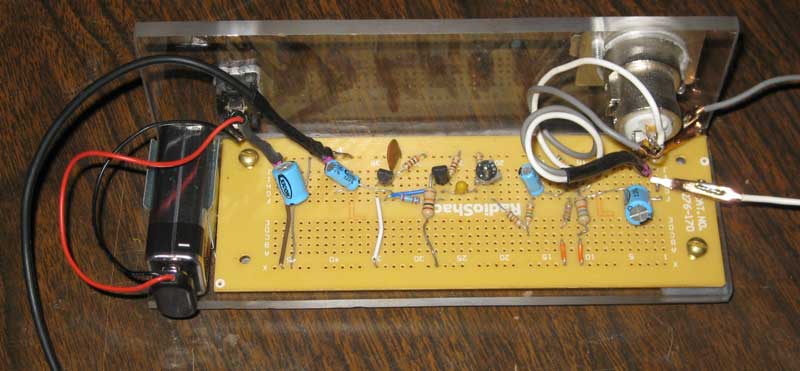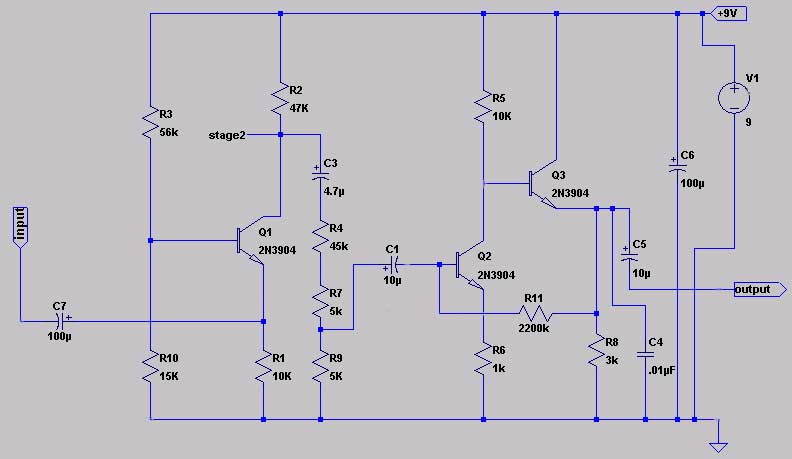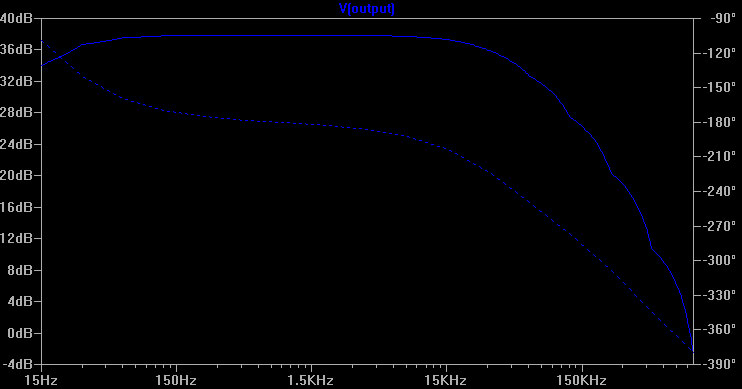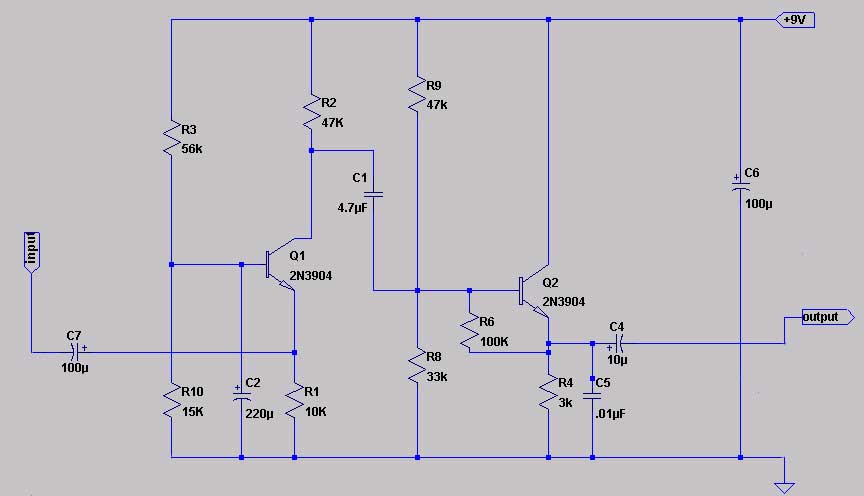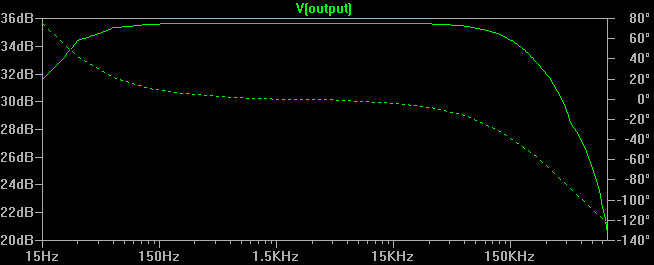
This
graph is the output of the spice simulator. It shows pretty flat
amplification from around 30Hz up to about 100kHz, at which point the
high frequency filter kicks in. Also phase shift (dotted line) is
pretty constant in the audio frequency band.
If you have suggestions, please feel free to contact me.
